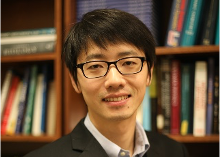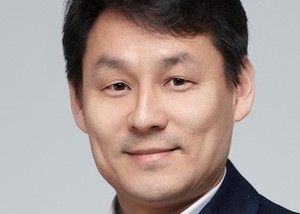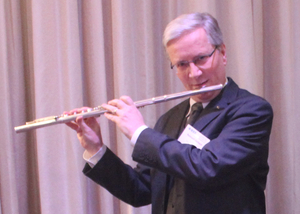Department Talks
- Dr. Jianyu Li
- Silver (2P04)
Bioadhesive technologies are important in a wide range of applications, spanning from wound management to wearable technologies. Forming and controlling tough adhesion on biological tissues has been a long-lasting challenge, necessitating transdisciplinary approaches. In my talk, I will share our recent progress in the design, mechanics, and applications of tough bioadhesives. I will first discuss the limitations of clinically used surgical glues and blood clots in terms of adhesion properties. I will then present the mechanical principles for making tough bioadhesives that exhibit superior adhesion performance on diverse tissues. Furthermore, I will discuss our transdisciplinary approaches and underlying mechanisms for controlling tough bioadhesion through ultrasound and interfacial entanglements. Lastly, I will showcase the applications of tough bioadhesives in wound management, tissue repair, and hemorrhage control. This talk will highlight the synergy of materials and mechanics in the development of new biomaterials poised to address biomedical challenges.
Organizers: Christoph Keplinger Adrian Koh
Nature-inspired designs for innovating soft robotic grippers and prosthetics
- 18 July 2023 • 13:30—15:00
- Prof. Dr. Kyu-Jin Cho
- Hybrid - Webex plus in-person attendance in 2P04, MP-IS Stuttgart
In this talk, I will discuss the cutting-edge research conducted at our Soft Robotics Research Center and Biorobotics Lab, with an emphasis on the development of grippers and prosthetics inspired by the adaptive behaviors and embodied intelligence observed in nature. Traditional robots are designed for structured environments and navigate unstructured environments using sensors and intricate computation. To adapt to and flourish in unstructured environments, nature employs simple embodied intelligence, which does not necessarily require sensing or complex computation.
Organizers: Christoph Keplinger Metin Sitti
Instability-driven Pattern Formations for Dynamically Tunable Functionalities in Soft Magneto-Active Materials
- 12 May 2023 • 10:30—11:45
- Prof. Dr. Stephan Rudykh
- MPI-IS Stuttgart, 2P04
Nature actively uses sophisticated designs of microstructures to achieve astonishing material properties and functionalities. Thus, microstructures give rise to the incredible toughness of mother-of-pearl. Another example is an octopus, an amazingly effective soft machine created by nature. The creature can squeeze its whole body through an extremely narrow space while preserving a large variety of functionalities. The nature-created soft machine comprises highly deformable composites that are characterized by different dynamically tunable microstructures and phase properties, depending on the required functionalities. Indeed, such materials are highly desirable for many applications, including human-interactive soft robotics, novel actuators and sensors, and biomedical devices.
In this presentation, I will specifically focus on the role of microstructures in the performance of deformable magneto-active composites. We will consider how large magneto-mechanical deformations and elastic instabilities can be used to trigger dramatic pattern transformations, and to control a large variety of functionalities; in particular, the design of switchable acoustic metamaterials will be discussed. Analytical and numerical findings, as well as experimental results of 3D-printed soft composites, will illustrate the ideas.
Organizers: Christoph Keplinger Xiying Li Brian Johnson
ELECTRETS (Dielectrics with quasi-permanent Charges or Dipoles) A long History and a bright Future
- 25 July 2022 • 13:15—14:30
- Prof. Reimund Gerhard
- 2R04 - Werner Köster Lecture Hall, MPI-IS
Electrets have a long history starting more 2600 years ago and a bright future in the areas of soft transducers, plastic electronics, radiation dosimeters, air filters, etc. From the beginning, the similarities, the differences, and the combinations of dielectric and magnetic materials, of positive and negative “electricities”, of internal hetero-charges and external homo-charges, etc. have been puzzling natural philosophers and scientists. At the same time, rather slow, but continuous progress in the understanding and the application of electrets has been made. Recently, the essential role of charges in the piezoelectricity of ferroelectric polymers and polymer ferroelectrets led not only to new electret-based materials and devices, but also to new approaches for understanding the diversity of electrets. Electrets are dielectric materials with quasi-permanent space charges and/or dipole polarization. They come as electro-electrets, space-charge electrets, ferro-/piezo-electrets, molecular-dipole electrets, piezo-/pyro-/ferroelectric crystals or ceramics, and piezo-/pyro-electric composites. Electrets are not always polymeric and soft and often not only electromechanically active (piezoelectric/electrostrictive), but can also be inorganic, hard, heterogeneous, ferroelectric, pyroelectric/electrocaloric, providing a quasi-permanent electric field, etc. A brief overview of the long history, of the various types of electrets and of intuitive ways to understand their relevant properties from their nano-, micro- or macro-level structures will lead to examples of new materials and systems with useful applications.
Organizers: Christoph Keplinger




